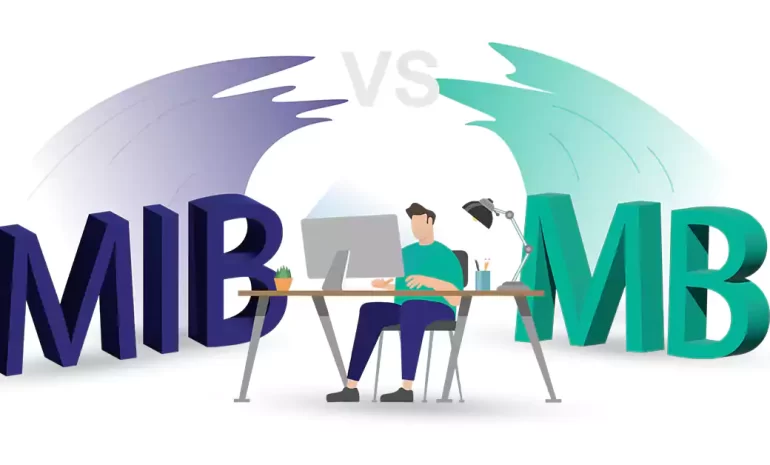






In the world of digital storage, the terms “mebibyte” (MiB) and “megabyte” (MB) are often used interchangeably. However, there is a subtle difference between the two that can have a significant impact on how data is measured and understood. This guide aims to provide a comprehensive explanation of MIB vs. MB, the differences between mebibytes and megabytes, their origins, and their applications.
The megabyte is a term commonly using in the field of computing and digital storage. It is a unit of measurement that represents a large amount of data. In the International System of Units (SI), one megabyte is equal to 1,000,000 bytes, where a byte consists of 8 bits. Traditionally, the megabyte has been the standard unit of measurement for storage capacity, file size, and data transfer rates.

In contrast to the megabyte, the mebibyte is a unit of measurement based on binary rather than decimal values. The mebibyte was introduced by the International Electrotechnical Commission (IEC) in 1998 to clarify issues arising from the use of decimal-based prefixes for binary-based measurements. One mebibyte is equal to 1,048,576 bytes, where a byte consists of 8 bits.
Hence, the mebibyte provides a more accurate representation of data capacity in binary systems.

The confusion between mebibytes and megabytes arises from the inconsistent use of prefixes in the computing industry. Many storage devices and software manufacturers use the SI prefixes (based on decimal values) when referring to storage capacities, resulting in discrepancies between the actual storage capacity and the amount reported by the operating system.
This discrepancy can cause frustration among users and lead to misunderstandings.
The division between mebibytes and megabytes is primarily relevant in computing, particularly when dealing with digital storage, memory, and data transfer rates. It is essential to consider this distinction when working with operating systems, storage devices, and software that rely on accurate measurements of data.

Generally, if you are discussing storage devices, file sizes, or data transfer rates, it is crucial to use the appropriate unit of measurement to avoid any confusion or misinterpretation.
Here is a comparison table between Mebibyte (MIB) and Megabyte (MB):
| Mebibyte (MiB) | Megabyte (MB) |
|---|---|
| Equal to 1,048,576 bytes | Equal to 1,000,000 bytes |
| Used in computers and digital storage | Used in computers and digital storage |
| Based on binary calculation | Based on decimal calculation |
| Commonly used for memory measurements | Commonly used for file sizes |
| Often used in software and operating | Frequently used in industries like |
| Systems | Telecommunications and data storage |
While mebibytes (MiB) and megabytes (MB) both represent units of digital storage, their fundamental difference lies in the base of their measurements. Understanding the distinction between these units is crucial when dealing with digital storage, memory, and data transfer rates, as it ensures accurate measurements and avoids potential misunderstandings. By being aware of the differences between mebibytes and megabytes, users can make informed decisions and have a clearer understanding of their digital storage requirements.
How useful was this post?
Click on a star to rate it!
Average rating 4.1 / 5. Vote count: 9
No votes so far! Be the first to rate this post.
 Tags
Tags

Minecraft is a popular sandbox video game created by Markus Persson and developed by Mojang Studios....



 Tags
Tags

In the fast-paced world of online business, ensuring the security and reliability of websites and se...



 Tags
Tags
What is your opinion about this Blog?








